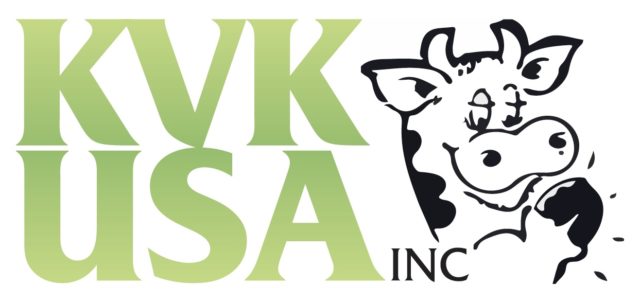John de Jonge of Abbotsford, British Columbia, went to a trade show in China two years ago. He set up a booth for Artex Barn Solutions, displaying several Canadian flags. He says he didn’t really expect to sell anything. But when the Chinese saw the Canadian flags, they swarmed the booth.
From this trade show, de Jonge learned that there were many opportunities for North American and European dairymen and companies in the Chinese dairy industry because Chinese dairymen are looking to the Western world for help.
In recent years, there has been growing milk consumption in China as the people develop a taste for milk and other dairy products. And because of milk’s health benefits, the Chinese government is encouraging its citizens to consume dairy products.
But despite the growing demand, dairy production in China can’t meet the demand because of poor feed, the recent melamine scandal, and a lack of management tools and knowledge. Milk prices were about $25 per hundredweight in 2009 and production and labor costs were 50 percent or less than those in the U.S., according to de Jonge.
To develop their dairy infrastructure and meet the demand in the market, the Chinese are looking to outside sources for help. The Global Dairy Farmers (GDF), a group of leading dairymen and dairy equipment companies, decided to visit China and explore some of these opportunities.
“GDF asked if they could partner with our company because we already have relationships in China since we’ve been there for three years. We brought the GDF in for two reasons. One, to give the GDF a preview of what’s happening in China and to expose them to investment opportunities. And secondly, for our existing customers in China, who are pleading for knowledge and investment, we brought in a group of potential investors that have knowledge of the dairy industry,” de Jonge says.
The GDF has members from many countries around the world, including the U.S. Every year the GDF organizes a conference in a different country. In past years they’ve visited Russia, Australia, Brazil and the U.S.
“Visiting other countries gives us inside information about our competitors wordwide and creates an overall view about the dairy business. Organized traveling and discussion with entrepreneurs on these trips helps a lot to translate the new knowledge to strategies,” says Frank Lenssink, a GDF member and manager of the Research Dairy Farm Zegveld of Wageningen University.
Bram Prins of Ten Boer, Netherlands, the president of GDF, says it was a three-step trip. The first step was to attend the World Dairy Expo/China in Hangzhou and meet investors and companies in China.
Many of the companies were Western companies. They also attended a seminar at the Dutch embassy, where speakers from all over the world, including two GDF members, talked about technology advancements in their countries. The second step was their visit to Hohhot, Mongolia, often called the dairy capital of China. While there, they toured two new, modern dairies and some small, traditional dairies.
“They showed us the most modern factory I’ve ever seen. It was completely robot-automated, with the capacity of 20,000 tons of milk a day. It was unbelievable. But we did not see all this milk. They are ready to process a huge amount of milk, that’s clear to me. But the milk is not there,” Prins says.
Milk production dropped 35 percent last year because the melamine scandal decreased demand, and projections are that they won’t reach their former level of production for another two years, according to Prins.
While touring, they visited a dairy owned by Yili, a corporation. The dairy had been established in 2004 and rapidly expanded to 500 head.
Commenting on this, Prins says, “You can see that these farms are still developing. The biggest problem for Chinese farmers is that they have excellent plans and good consultants, but implementation is difficult due to the lack of motivation and lack of knowledge of the labor force. The labor force isn’t really uninterested, but they don’t know how to handle the work, so they don’t use proper protocols.”
Lenssink also commented that he saw a lot of “short-term investments in big buildings. The problem will be quality management of these large-scale dairy farms.”
The small dairies were different from Western dairies. A milking parlor, owned or subsidized by a corporation, would be situated in the center of a small village. Each family in the village owned from one to five cows. Twice a day the families walk their cows to the milking parlor, milk them, measure the milk in a jar and receive money for the milk their cows produced that day.
Most dairies are set up this way. The average herd size in China is three. But according to Prins, this system is beginning to disappear – they can’t go on much longer.
“They feed their cows very poor- quality feed. They don’t know how to treat animals properly. So what’s happening is you have very poor milk quality, very poor production, very poor animal health and very poor reproductive rates. So this system is just not a good system. It’s a system like – I’m from Dutch descent – something we had in the early 1900s,” de Jonge says.
The third step of the trip was a two-day GDF conference in Beijing. The GDF met with Dairy United and the Hohhot Dairy Association, both companies from China. On the first day they listened to speakers who talked about the developments and innovations in China and the world. The second day they did half-hour internal workshops discussing the developments and innovations of the coming year and how they could handle them.
“There is a very quick transition from the old way to the new way in China. What took Canada and the U.S. 50 years to learn and develop is going to be done in between five and 10 years in China. I think that was probably the biggest take-away. We, in the developed countries, have spent 50 years learning these things. They’re just going to buy the technology. That’s why we partner with other companies, and we go in there and build dairies. We’re getting these jobs because we can bring value to the Chinese industry that the Chinese people, who are our competitors, can’t. They don’t know how to build these dairies properly, and we’ve put a group of companies together to do that,” de Jonge says.
Dairies are a new thing in China, so they are 20 to 30 years away from being a real competitor in the world market, according to de Jonge.
“It’s a huge potential market for the West, but it will develop with ups and downs. The focus right now is just on quantity of milk. In the future, the focus will change to quality,” Lenssink says. PD




